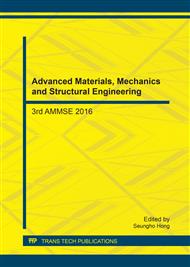p.8
p.15
p.20
p.26
p.33
p.38
p.44
p.48
p.53
The Influence of Synthetic Temperature on Structure and Performance to LiNi1/3Co1/3Mn1/3O2
Abstract:
LiNi1/3Co1/3Mn1/3O2 was prepared by high temperature solid-state method under different synthesis temperature. The structure and morphology of LiNi1/3Co1/3Mn1/3O2 were characterized by Scanning electron microscopy (SEM) and X-ray diffraction (XRD). Electrochemical performance of the cathode material was researched by Land 2001. XRD and SEM results show that the well-crystallized LiNi1/3Co1/3Mn1/3O2 composite with homogeneous small particles was obtained. And the optimum synthetic temperature was 500°C for 5 hour and 900°C for 20 hour. From charge/discharge test, it can be seen that at 0.1C, 0.2C and 0.5C rate, LiNi1/3Co1/3Mn1/3O2 has initial discharge capacities of 178.6mAh/g, 172.9mAh/g and 152.7mAh/g, respectively. The discharge capacities of optimum sample remain above 85% after 43 cycles. This study provides the selection of synthetic temperature via solid state methods.
Info:
Periodical:
Pages:
33-37
Citation:
Online since:
February 2017
Authors:
Price:
Сopyright:
© 2017 Trans Tech Publications Ltd. All Rights Reserved
Share:
Citation:


